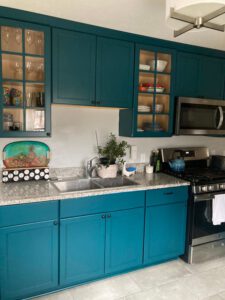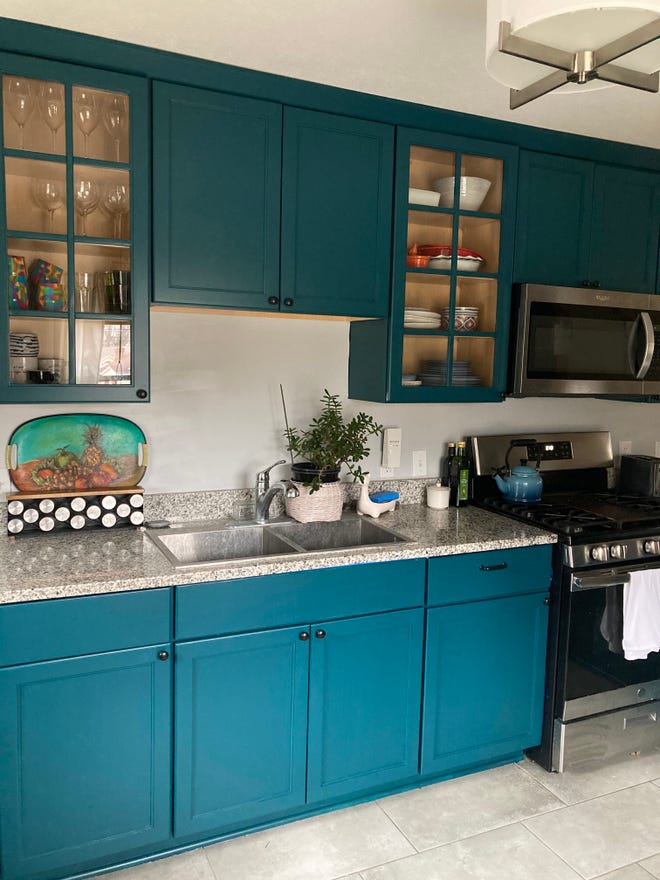Del Mar Cabinet Painting is a great way to update your cabinets, and add a new look to your home. There are several things to keep in mind when you are planning to paint your cabinets. If you are not sure where to start, consider these tips:

Preparing your cabinets for painting is the most important part of the process. The right preparation can ensure a smooth, professional finish. It can also protect your cabinets and appliances.
Before you get started, you need to clean your cabinets. Use a tough cleaner that will remove dirt, grime, and oils from the cabinet surfaces. This will help the paint adhere better and will also remove the stains and grime that can splatter on your finish.
After you have cleaned your cabinets, it’s time to prepare the surface for painting. You can use drop cloths or tack cloths to cover your work area. If you’re using tacking cloths, be sure to shake them out before using them again.
Next, you’ll want to apply the best primer you can find to your cabinets. A good oil-based primer is a must. Oil-based primers will keep stains and wood bleed out of your finish. BIN primer will also do the trick.
For the best results, you need to do your research. There are many ways to paint your cabinets, so it’s important to select the product that will give you the highest quality finish. You should consider the type of paint, the type of primer, and the materials used for texturing.
To ensure that you get the best result, you’ll need to take your time. Painters who work in a hurry will probably be disappointed with their work. Also, you’ll need to choose a primer that’s compatible with your paint.
The best way to do this is to draw a diagram of your kitchen. Draw out all of the cabinet parts and label them. You’ll also need to have the appropriate tools on hand. Using the right tools can make the process go a lot quicker.
If you have to paint your kitchen cabinets, you’ll need to decide between oil-based paint and latex paint. Both paints provide the same quality of finish, but they’re slightly different.
Oil-based paint is better for wood and metals, but it takes longer to dry. It’s also more toxic to your health. In addition, it can damage wood trim and doors. You’ll need to keep it well ventilated, and you’ll need to use turpentine to clean your brushes.
On the other hand, latex paint is less toxic and more forgiving. However, it is also more expensive. And it needs a primer, which helps ensure even coverage. Latex isn’t as durable as an oil-based enamel paint, but it’s still a good choice for kitchen cabinets.
The main difference between the two types of paint is that oil-based paint is thicker. Unlike latex, it can be used in only one coat. Consequently, you will need to sand it thoroughly between coats. Plus, it will be more difficult to apply.
Latex is better for beginners. A novice painter will be able to handle it more easily. Moreover, latex is easier to clean up. As opposed to oil-based paint, it doesn’t need a solvent to remove excess paint. Similarly, you can wash it with soap and water.
The odor of oil-based paint is stronger than that of latex. The paint will also stain more easily. Furthermore, it will yellow over time. That’s why some people opt to use it in their homes.
Whether you choose oil-based or latex for your cabinet painting project, you need to make sure you’re doing it right. If you’re not sure, try testing out a sample to see what you like. This will save you some time, elbow grease, and money.
The first step to painting your cabinet is to remove the old paint and prepare the surface. Sanding the surface is very important to smooth out imperfections and get a good base for your paint. Paint will not bond well to wood cabinets without a good primer.
There are a few different types of primers to choose from. Some are oil-based, and some are water-based. Oil-based primers tend to fill the grain of the wood and provide the best adhesion. They are also resistant to stains and weather. However, they are also harder to clean and can be messy.
A water-based acrylic primer is another good choice for a DIY project. It works the same way as oil-based primers, but it doesn’t have the same durability. To avoid a streaky finish, you should follow the grain of the wood. You can apply it to both bare and stained wood.



